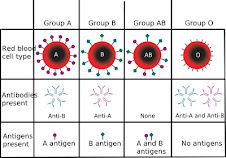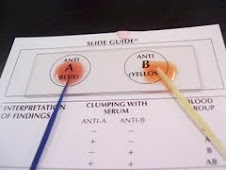 In Mr. Kelly's class we were put into groups of 4 or 5 and our goal was to solve a crime. My teammates were: Andy Platt, Lauren Bennett, and Lena Lepari. In our crime scene we had this evidence: 2 blood sample(4D,3D), fiber, gold chain, foot print, a deodorized cotton ball, hair, and we had a potential homicide. After we tested the blood samples our results were 4D: Blood type B and 3D: Blood type: A. With this done we narrowed down our suspect to Ralf Johnson, Jenny Cho, Sam Tilson, and Mr. Popadines. On his rap sheet Sam had already been convicted of murder and jenny was wearing a gold chain in her picture. This is my crime scene scenario or what i think happened according to my evidence: One day Jenny was walking home from her work (some kind scientist) wearing her sneakers, after just having bought a refill for her favorite perfume so she was carrying it in her hand,and her favorite gold chain that had been given to her. Then Sam pops up and reels her into this alleyway, which was were the evidence was found, and he tries to take Jenny's chain but she hesitated to give it to him and so Sam out of pure anger struck Jenny which caused her to bleed(blood type A). As a defense Jenny threw her brand new bottle of perfume a Sam, which bounced off his face onto the side of the alleyway, causing his jaw to start bleeding heavily. Sam intended to do much more to Jenny but he then heard the police siren and ran off Jenni scared that she would be accused of something fled as well.
In Mr. Kelly's class we were put into groups of 4 or 5 and our goal was to solve a crime. My teammates were: Andy Platt, Lauren Bennett, and Lena Lepari. In our crime scene we had this evidence: 2 blood sample(4D,3D), fiber, gold chain, foot print, a deodorized cotton ball, hair, and we had a potential homicide. After we tested the blood samples our results were 4D: Blood type B and 3D: Blood type: A. With this done we narrowed down our suspect to Ralf Johnson, Jenny Cho, Sam Tilson, and Mr. Popadines. On his rap sheet Sam had already been convicted of murder and jenny was wearing a gold chain in her picture. This is my crime scene scenario or what i think happened according to my evidence: One day Jenny was walking home from her work (some kind scientist) wearing her sneakers, after just having bought a refill for her favorite perfume so she was carrying it in her hand,and her favorite gold chain that had been given to her. Then Sam pops up and reels her into this alleyway, which was were the evidence was found, and he tries to take Jenny's chain but she hesitated to give it to him and so Sam out of pure anger struck Jenny which caused her to bleed(blood type A). As a defense Jenny threw her brand new bottle of perfume a Sam, which bounced off his face onto the side of the alleyway, causing his jaw to start bleeding heavily. Sam intended to do much more to Jenny but he then heard the police siren and ran off Jenni scared that she would be accused of something fled as well.My scenario is probably not anything like my teammates and that is okay because that is the way that they viewed the crime scene.






